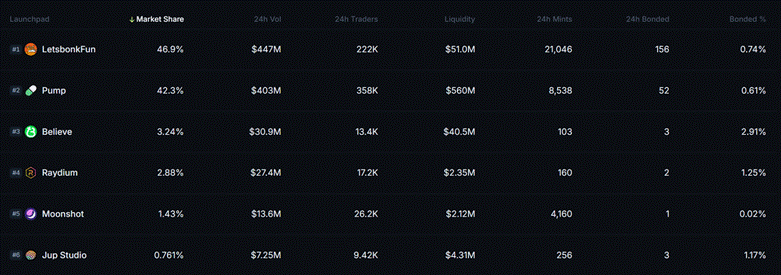1 Big Reason to Buy Solana Right Now, and 1 Reason to Be Cautious
The Solana blockchain is pulling away from the competition in one critical dimension.
Much like the companies that issue stocks, blockchains that issue cryptocurrencies can be analyzed by the amount of revenue they produce. Assets with more revenue and more revenue growth are likely to be better investments than those without.
By that standard, Solana (SOL 0.87%) is worth looking at closely as a potential investment. On Sept. 18 alone, its decentralized applications (dApps) generated roughly $6.9 million in revenue, more than the next 10 chains combined, and nearly three times the next largest competitor’s tally for the day. That certainly adds to the case for buying it, but when that fact is put in context, investors will also find some reasons to be a little bit cautious here.
Image source: Getty Images.
A reason to buy: A booming app economy
Before getting into the weeds, let’s start with a quick definition. In this context, “application revenue” is the sum of revenue earned by apps on a chain, which is distinct from base gas fees. By convention, the metric excludes stablecoin issuers, liquid staking, and gas itself. It’s a basic measurement of the level to which actual users are paying apps for their services.
So when Solana’s apps pulled in millions of dollars over a 24-hour period, outpacing not just its biggest competitor, Ethereum, but the rest of the field in aggregate, it was a big deal. What’s even more salient is that over the prior 30 days, Solana’s total application revenue of $211 million was more than twice Ethereum’s, so these results were not just a blip.
If you want one reason to buy Solana right now, this is it: There are customers consistently paying to use the applications on its chain, and far more of them than on any other network.
But why does this matter in the bigger scheme of things? The main reason is that app revenue tends to compound.
When app developers see users paying for services, they’re heavily incentivized to make and ship more of their products to that venue. Then the growth flywheel spins even faster as customers see that they can address multiple needs within the same ecosystem. Solana is thus where many developers perceive the growth to be.
Investors should also understand how this value generation accrues to Solana itself rather than just to application-related tokens.
In a nutshell, application revenue does primarily accrue to the applications and their treasuries or tokenholders, not directly to Solana holders. With that said, more usage generally boosts demand for blockspace and the network’s fee markets. And satisfying a customer’s demand for Solana app services requires them to buy and hold Solana to cover their fees. In other words, the ownership flywheel to Solana’s value is more indirect than on chains that burn a larger portion of fees, but strong app revenue still signals a healthy economy that can attract capital and talent, and more activity on the chain does induce more demand for the coin, and thus, drives its price higher.
A reason to be cautious: The headline numbers don’t tell the whole story
There’s an important catch here with Solana’s application revenue. A lot of the applications generating the largest proportion of the network’s revenue are not exactly focused on serious lines of business.
In fact, a large slice of Solana’s application revenue currently depends on applications that streamline the launching and trading of meme coins, which are cyclical, highly speculative, and often simply a stand-in for gambling. That makes sense given that meme coins accounted for roughly 70% of Solana’s decentralized exchange volume at one point, with over 60% of Solana app revenue being closely related to meme coin investing. If market conditions become a bit less frothy, that volume and those revenues are likely to dry up rapidly.
Does that make Solana uninvestable? Not at all. It just means that investors should be aware that its casino-like projects are the ones that are the most successful at the moment. Casinos can be profitable to own, but it’s still important to recognize that you’re (at least in part) buying a portion of one by buying Solana right now.
Assuming that the revenue mix gradually broadens — and it likely will — Solana can convert today’s traffic into longer-lived and more serious segments, and hang onto its mindshare among developers. If its mix stays overly dependent on meme coins, it might be a volatile ride, and the crypto’s upside might have a lower cap.
The investment thesis for buying this coin still rests on the real economic signal that users are paying to use apps at scale on this chain, and at a vastly higher rate than they’re doing that elsewhere. There are a lot of reasons to be bullish about Solana’s future, so the balance of risk and reward here does still tilt heavily toward buying it.
One way to have your cake and eat it too is to accept a long holding period and restrict yourself to a modest position sizing, at least until there’s clearer evidence of the ecosystem widening a bit. Until then, just remember that casinos wouldn’t be so large and opulent if they were bad at making money.




